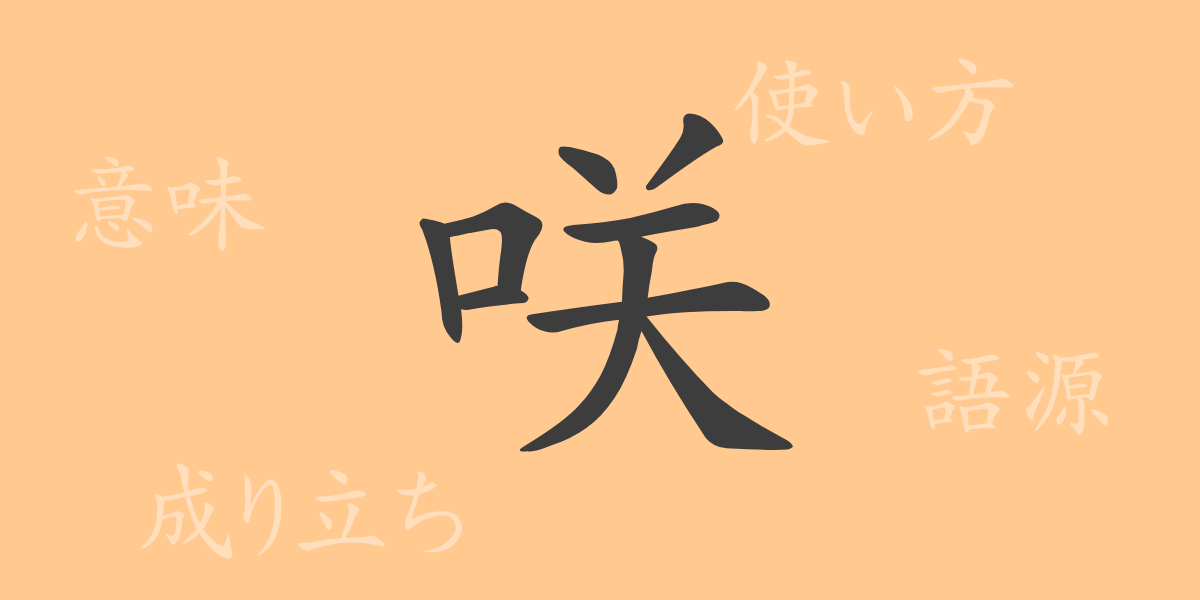The four seasons of Japan are deeply ingrained in the lives of its people, reflected through the changing landscapes. When cherry blossoms bloom in spring, it symbolizes new beginnings and beauty. This article focuses on the commonly used kanji “咲” (さく, saku), exploring its origin, meaning, usage, and the idioms and proverbs associated with it, delving into the charm of this character.
Origin of 咲 (さく, saku)
The kanji “咲” (さく, saku) has been used for a long time to describe the blossoming of flowers. Its origin can be traced back to ancient Chinese texts, from where it was introduced to Japan along with other kanji. The character is composed of the radical “口” (くち, kuchi), meaning “mouth,” and “艸” (くさかんむり, kusakanmuri), representing lush vegetation. This combination portrays the image of flowers blooming as if mouths are opening.
Meaning and Usage of 咲 (さく, saku)
“咲” (さく, saku) primarily refers to the blossoming of flowers. It is commonly used during seasonal transitions, especially in spring when cherry blossoms bloom, symbolizing beauty. Additionally, it can metaphorically describe the flourishing of something or a person’s face lighting up with a smile.
Readings, Stroke Count, and Radical of 咲 (さく, saku)
“咲” (さく, saku) is a kanji with a poetic resonance in Japanese.
- Readings: The on’yomi (音読み) reading is “ショウ” (shou), and the kun’yomi (訓読み) reading is “さく” (saku).
- Stroke count: It has a total of 9 strokes.
- Radical: The radical is “口” (くち, kuchi).
Idioms, Phrases, and Proverbs Using 咲 (さく, saku) and Their Meanings
Kanji “咲” (さく, saku) enriches Japanese expressions through various idioms, phrases, and proverbs. For instance, “一笑一咲” (いっしょういっさく, isshou issaku) translates to “one laugh, one flower blooms,” depicting a cheerful conversation. The phrase “満開の笑顔” (まんかいのえがお, mankai no egao) means “a full-bloom smile,” likening a person’s broad smile to fully bloomed flowers.
Conclusion on 咲 (さく, saku)
The kanji “咲” (さく, saku) plays an essential role in evoking the joy of spring in the hearts of the Japanese. Its delicate meaning, usage, and beautiful idioms and proverbs reflect the deep connection between nature and people. Through this exploration, we hope you have appreciated the rich world of expressions that “咲” (さく, saku) offers.

























